9 Places You’re Most Likely to Catch COVID as Summer Wave Surges

COVID’s surge shows no sign of slowing down as the biggest summer wave in two years continues. In fact, COVID levels are “very high” in 27 states, according to the CDC’s wastewater data. “Currently, the COVID-19 wastewater viral activity level is very high nationally, with the highest levels in the Western US region,” Dr. Jonathan Yoder, deputy director of the CDC’s Wastewater Surveillance Program, said to CNN. “This year’s COVID-19 wave is coming earlier than last year, which occurred in late August/early September.” Fortunately, death rates and hospitalization rates are nothing like they were during previous waves due to greater immunity and vaccines. But catching COVID still comes with risks, including LONG COVID, which can result in chronic, debilitating illness. So how do you stay safe? Use caution before entering these nine places you’re most likely to catch COVID now, as the summer wave surges.
RELATED: COVID Levels Are “Very High” in These 27 States
Crowded indoor events

COVID spreads primarily through respiratory droplets when an infected person coughs, sneezes, talks, or breathes, especially in close-contact settings or poorly ventilated areas. “People who are higher risk for getting very sick from COVID-19 should consider taking extra precautions for the next few weeks, like limiting time in crowded indoor settings or wearing a mask in crowded indoor settings. People rarely get COVID-19 outdoors, so outdoor events remain quite safe,” say the experts at the Tacoma-Pierce County Health Department.
Airports, airplanes and public transportation
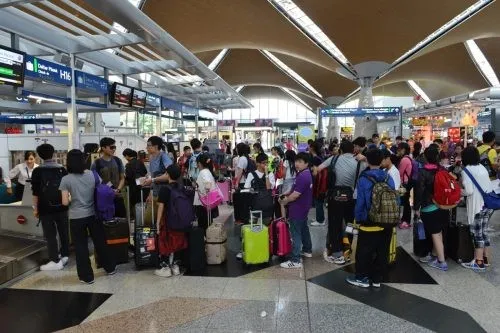
Given the COVID rates right now, the CDC urges travelers to “get up to date with your COVID-19 vaccines before you travel and take steps to protect yourself and others. Consider wearing a mask in crowded or poorly ventilated indoor areas, including on public transportation and in transportation hubs. Take additional precautions if you were recently exposed to a person with COVID-19. Don’t travel while sick.” They go even further for certain folks: “If you have a weakened immune system or are at increased risk for severe disease, talk to a healthcare professional before you decide to travel. If you travel, take multiple prevention steps to provide additional layers of protection from COVID-19, even if you are up to date with your COVID-19 vaccines. These include improving ventilation and spending more time outdoors, avoiding sick people, getting tested for COVID-19 if you develop symptoms, staying home if you have or think you have COVID-19, and seeking treatment if you have COVID-19.”
Shopping malls

Studies are just now coming out with an analysis of what happened during the height of the pandemic. Although times are different now, these results can be instructive. For example, one study published in April 2024 “examines the transmission of COVID-19 through casual contact in retail stores using data from Denmark. By matching card payment data with COVID-19 test results, researchers tracked over 100,000 instances where infected individuals made purchases in stores. They found that customers exposed to an infected person in the same store within a 5-minute window had a significantly higher infection rate in the following week. The study concludes that retail store transmissions contributed notably to the spread of COVID-19, particularly during the period when the Omicron variant was dominant.”
Religious gatherings

The transmission of the SARS-CoV-2 virus during religious events has nothing to do with religion and everything to do with a communal gathering in which people, well, commune. “The smallest SARS-CoV-2 droplets can remain airborne and travel farther than six feet. The scientific community does not agree upon what is a ‘safe distance,’ but standing near an infectious person is riskier than standing farther away,” says the AMA. Additionally, “the amount of virus a person is exposed to can influence the chance of infection and the severity; consequently, staying in one place for a longer time creates a higher risk of infection.”
RELATED: 10 Symptoms of COVID New as Summer Wave Surges
Movie theaters
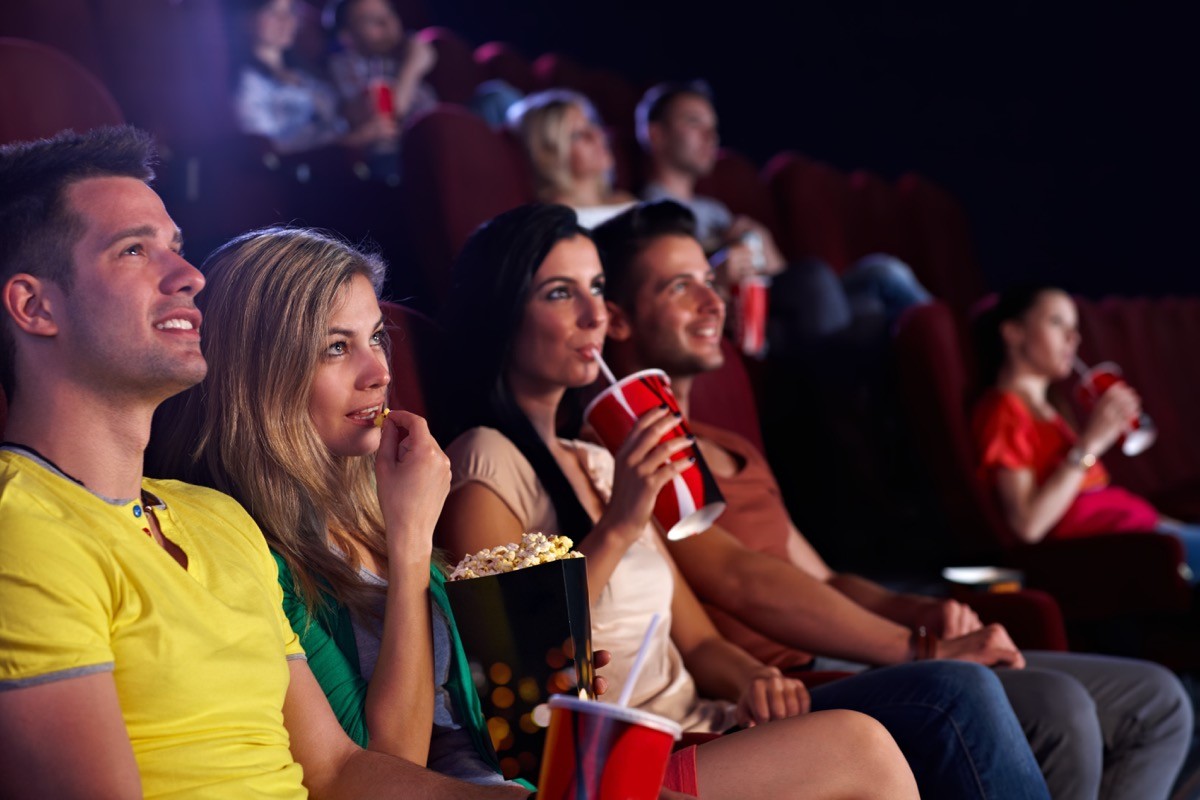
The box office is back, as hits like Deadpool & Wolverine, It Ends With Us, and Alien: Romulus pack them in after a few dark pandemic years of low attendance, the rare Barbenheimer proving the exception to the rule. For movie buffs, it’s a thrill. But check your theater’s ventilation before lining up around the block. One study published this year “investigates the risk factors for COVID-19 transmission during an outbreak in a movie theater in Incheon, South Korea, in November 2021. It involved 48 confirmed cases, primarily among theater attendees, with a high attack rate of 84.8% during one screening. The study found that inadequate ventilation and close proximity among audience members were key contributors to the spread of the virus despite most attendees being fully vaccinated. The study emphasizes the importance of proper ventilation in enclosed spaces like theaters to prevent airborne transmission of COVID-19.”
Healthcare facilities
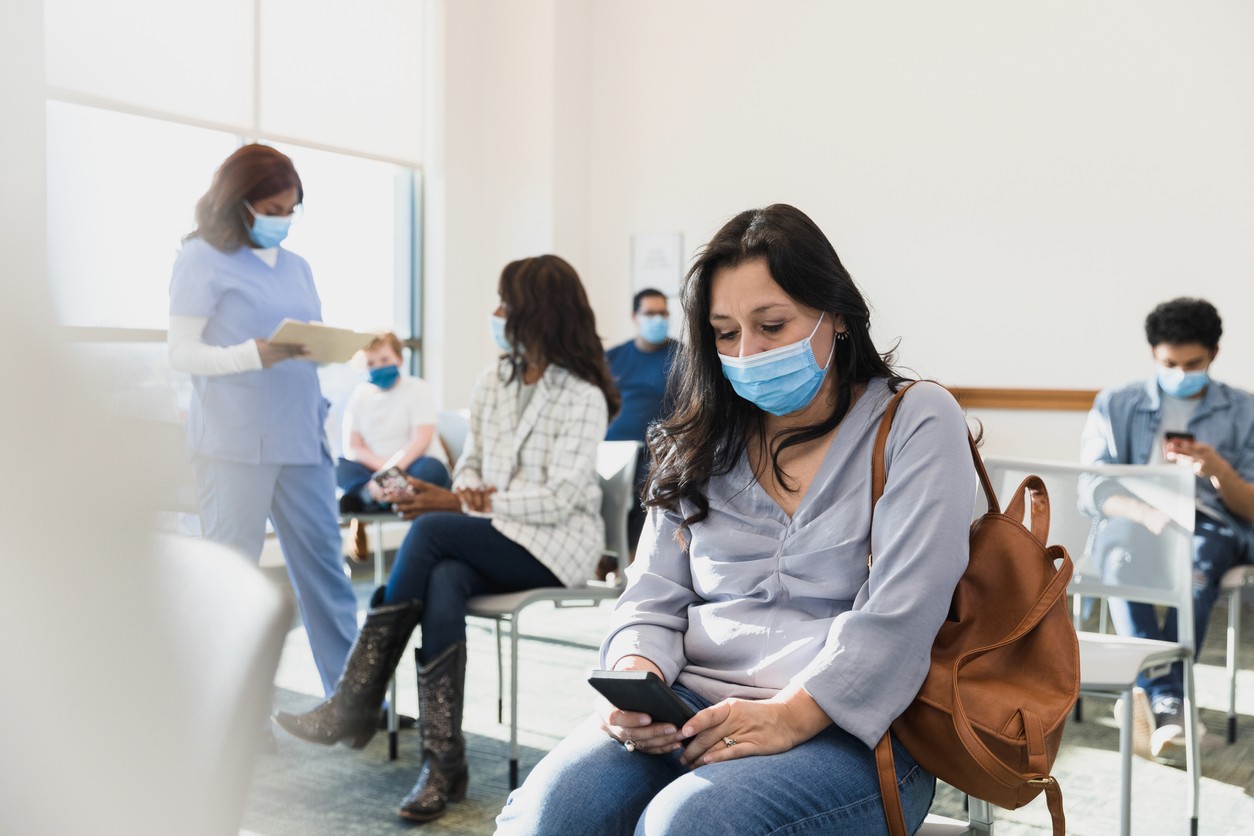
“Some hospitals across the United States are reinstating indoor masking rules amid rising cases and hospitalizations of respiratory illnesses including COVID-19 and influenza,” reported ABC News earlier this year. “Ultimately, health systems, hospitals, places that deliver care are going to see some of the most vulnerable and at-risk individuals — many, with underlying conditions,” Dr. John Brownstein, an epidemiologist and chief innovation officer at Boston Children’s Hospital and an ABC News contributor, told the network. “Those are especially the places where we want to protect individuals, and so when we have this rapid rise in respiratory illness, those are going to be the first places to try to use measures to reduce chances of transmission, both to protect patients, those receiving care, as well as workforce.”
Gyms and fitness studios
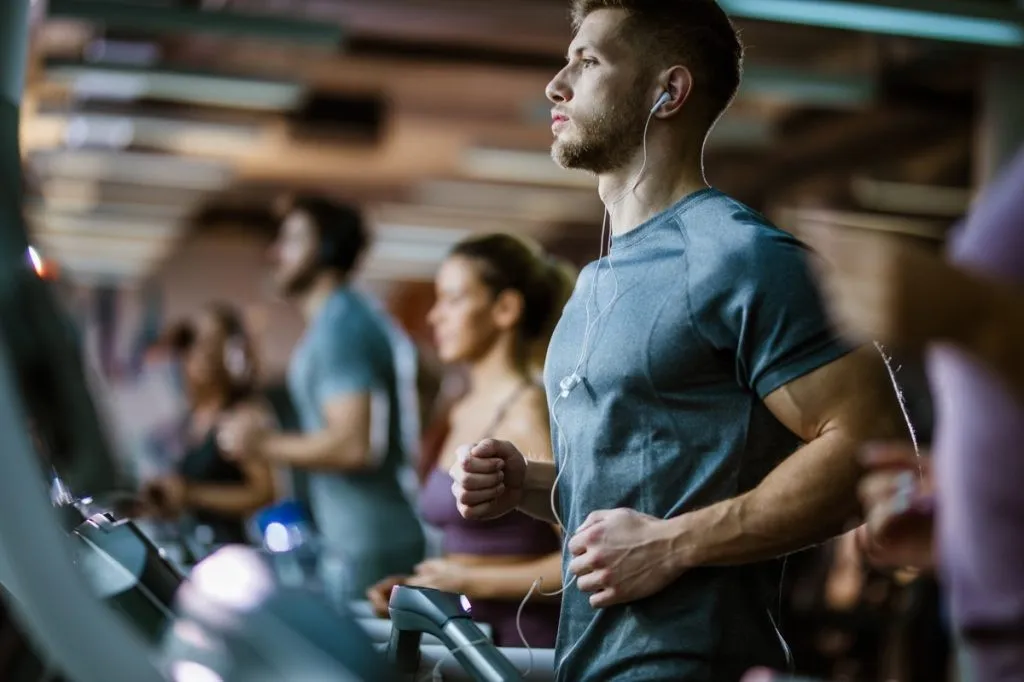
Common sense will tell you transmission of an airborne disease may increase the more frequently people breathe in and out—as you might do at the gym. One “study looked at the number of aerosol particles 16 people exhaled at rest and during workouts. These tiny bits of airborne matter — measuring barely a few hundred micrometers in diameter, or about the width of a strand of hair, and suspended in mist from our lungs — can transmit coronavirus if someone is infected, ferrying the virus lightly through the air from one pair of lungs to another,” reported the New YorkTimes during the pandemic. “The study found that, at rest, the men and women breathed out about 500 particles per minute. But when they exercised, that total soared 132-fold, topping out above 76,000 particles per minute, on average, during the most strenuous exertion.”
Bars and Nightclubs
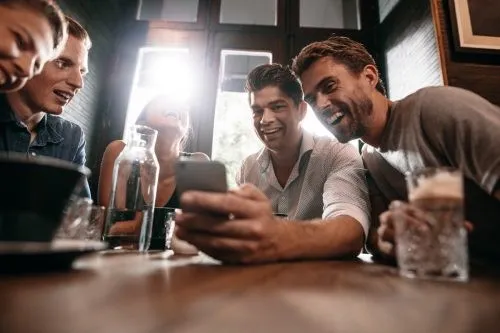
Just when some of us wanted to drink the most, bars were verboten during the height of the pandemic. There was a good reason to use caution. One study published last year “analyzed over 44,000 COVID-19 cases in Tokyo in 2020, focusing on transmission in various settings, including healthcare and nightlife venues like bars and nightclubs. It found that nightlife settings were more likely to involve clusters of five or more infections and were more likely to lead to further spread compared to other settings. The highest case-fatality rate was observed in healthcare settings. The findings suggest that targeting interventions in nightlife venues could be crucial for controlling COVID-19 transmission, especially during the early stages of an outbreak.”
Restaurants and cafés

Last year, the Washington Post asked virus experts if they’d eat in restaurants. Joanna Dolgoff, a pediatrician and spokesperson for the American Academy of Pediatrics, offered an answer that may be a decent North Star for you today. “At this time, I will continue to eat in restaurants as long as they are well-ventilated and not overly crowded. If somebody near me shows signs of illness, I will be prepared to leave immediately. If covid cases continue to spike and if illness becomes more severe, I will stop eating inside restaurants until cases subside,” she said.